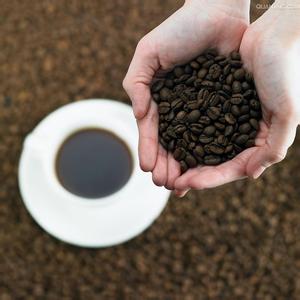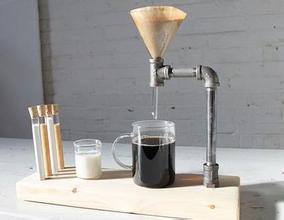Liberian caffeine content-caffeine content of a cup of coffee
Liberian caffeine content-caffeine content of a cup of coffee
The Robusta species, scientific name coffee RobustaLinden, is more resistant to leaf rust than Arabica, which is found in the African Congo. In fact, it was a mutant of the Congo species (scientific name Coffeacanephora). The name of the Robusta species has become popular, and it is regarded as the same species as the Congolese species. This has a unique aroma (called "Luobu smell", which some people think is moldy) and bitter, and is generally used in industrial coffee, such as instant coffee, bottled coffee, liquid coffee, or in a small amount in blended coffee. Caffeine is about 3.2%.
The Arabica species (coffea arabica) has a flat bean shape, slender granules, similar to oval shape, high quality aroma and sour taste, 5mur6m in height, cultivated in a low altitude area of 500m-2000m, not tolerant to low temperature and high temperature, not tolerant to heavy rain and little rain, weak resistance to leaf rust, and poor resistance to leaf rust. Within about 3 years, it originated in Ethiopia, among the three primary species. Arabica is of the best quality.
The coffea robusta Linden is originally a mutant of the coffea canephora, but it is customary to compare the robusta with the Arabica rather than the Congolese. Robusta bean type is relatively round, sour is not obvious, but has a unique bitter taste, the flavor is similar to fried wheat, is known as "Luobu flavor". The flavor is very strong, mainly used in instant coffee, bottled coffee, liquid coffee and other industrial production of coffee. But the caffeine content of Robusta is about 3.2%, which is much higher than 1.5% of Arabica. The height of the tree is about 5m, the cultivation height is less than 500m, it has strong rot resistance, high temperature and rain tolerance, and has stronger resistance to leaf rust than Arabica. The main producers of Robusta species are Indonesia, Vietnam and West African countries with C ô te d'Ivoire, Algeria and Angola as the center. In recent years, Vietnam is more committed to becoming one of the major coffee producers and including coffee production in its national policy. Hey, this is one of the answers to Mr. Eric's question about why Vietnamese coffee can be sold for 0.5 yuan a cup. First, quality; second, culture; third, quantity. But Vietnam also produces some Arabica coffee.
Coffea liberica does not want to go into great detail here, because his trading scope is very small, usually not used, what we are talking about is not very often, so let's briefly describe it here. The origin of Liberian coffee is in West Africa, and it has strong adaptability to all kinds of environments, such as high and low temperature, damp or dry, except that it is not resistant to leaf rust, and Arabica species are not resistant to leaf rust. However, the flavor of Liberian species is worse than that of Arabica species, and the bitterness is extremely severe, so it is only traded on the domestic market in some West African countries, or planted for research. Bean-shaped spoon-shaped, large, tree height of 10m, cultivated in the height of less than 200m, strong rot resistance.

Important Notice :
前街咖啡 FrontStreet Coffee has moved to new addredd:
FrontStreet Coffee Address: 315,Donghua East Road,GuangZhou
Tel:020 38364473
- Prev

What is the difference between low altitude and high altitude coffee beans? the area where the thickness of cocoa beans is different from that of coffee beans
What is the difference between low altitude and high altitude coffee beans? the difference in grinding thickness between cocoa beans and coffee beans the geographical location of coffee beans has a profound impact on the flavor of coffee beans. All coffee grows in the tropics, and the altitude at which it grows has a profound effect on the taste of the coffee. From the tropics to 30 degrees north latitude and the mountains south of the equator produce the world's truly high-quality Arabica coffee. China and America
- Next

Table of grindability of coffee beans and coffee utensils-difference of grinding thickness of coffee beans
Coffee beans and coffee utensils grinding degree corresponding table-coffee bean grinding thickness difference humidity change is also one of the factors affecting the grinding degree. When the humidity is relatively high, the moisture rate of the ground coffee powder is very fast, and there is already a slight humidity when filling and distributing the powder. at this time, the coffee flavor components have reacted with the air with higher humidity and become miscellaneous.
Related
- What brand of black coffee is the most authentic and delicious? what are the characteristics of the flavor of the authentic Rose Summer Black Coffee?
- Introduction to the principle and characteristics of the correct use of mocha pot A detailed course of mocha pot brewing coffee is described in five steps.
- Which is better, decaf or regular coffee? how is decaf made?
- How much is a bag of four cat coffee?
- How about four Cat Coffee or Nestle Coffee? why is it a cheap scam?
- Which is better, Yunnan four Cats Coffee or Nestle Coffee? How about cat coffee? is it a fake scam? why is it so cheap?
- How about Cat Coffee? what grade is a hoax? which instant coffee tastes better, four Cat Coffee, Nestle Coffee or G7 coffee?
- Process flow chart of coffee making-Starbucks coffee making process what coffee tastes good at Starbucks
- The top ten best coffee beans in the world Rose summer coffee or Tanzanian coffee tastes good
- Yunnan four cat coffee is good to drink?_four cat coffee is a big brand? four cat blue mountain coffee is fake?

